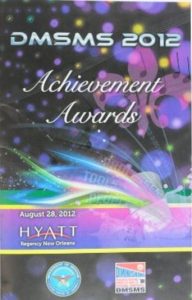COTS: A “reactive” good idea
Following a directive from the US military in the early 1990s, the defense industry made a shift from using custom embedded electronic components made to military specifications to commercial-off-the-shelf (COTS) […]
Following a directive from the US military in the early 1990s, the defense industry made a shift from using custom embedded electronic components made to military specifications to commercial-off-the-shelf (COTS) […]
 Saying that something is “good enough for government work” is often meant as a joke and the reference implies “mediocre work.” The irony is that “government work” is often highly sophisticated; systems are designed and engineered to operate in the most extreme environmental conditions for a very long period of time.
Saying that something is “good enough for government work” is often meant as a joke and the reference implies “mediocre work.” The irony is that “government work” is often highly sophisticated; systems are designed and engineered to operate in the most extreme environmental conditions for a very long period of time.
I recently had the pleasure of having lunch with a talented component engineer who has spent much of his career working in the defense industry. During the course of our discussion I learned that some aviation systems need ICs to operate in temperature extremes ranging from -55°C to 125°C; ground units often travel in harsh environmental conditions (e.g. fighting extreme heat and sand storms in deserts) while being exposed to hostile attacks; satellites traveling through orbit are exposed to protons and heavy ions from solar flares, yet must operate reliably in space.

Managing components at-risk of going EOL requires proactive planning, otherwise critical systems become increasingly at-risk for encountering counterfeits.
Photo by Sebastian Dooris
Managing components at risk of going EOL requires proactive planning. If this vital step is not implemented, critical systems run into increased risk of exposure to counterfeits. Two topics that program managers never want to hear about are counterfeit components, and end-of-life (EOL). While it is possible to come across counterfeit components on active products, this risk can generally be mitigated by implementing smart buying practices, such as purchasing from a franchised distribution line or directly from the original component manufacturer (OCM). Unfortunately, as components go EOL, yet are still needed in critical systems, they become difficult to find and increasingly more expensive. These facts combined with often careless buying practices, leave the embedded supply chain exposed to counterfeit components. These risks only increase as systems age.
No matter what your opinion; DNA tagging is currently one of the top methods being discussed to ensure component authentication. The Defense Logistics Agency (DLA) even issued a Request for Information on the subject.
Unfortunately, due to the costs projected and associated with DNA tagging and authentication, few businesses appear to be looking forward to the prospect.
At first glance DNA tagging, like many of the industry’s current solutions, makes sense: increase the complexity of the marks so that counterfeiters are unable reproduce it. DNA would be a “tag” both difficult and expensive to try and recreate. However, DNA tagging and many of the solutions being proposed are “point forward” solutions that, in order to be truly effective, would need to be implemented at the component manufacturing level, not once parts have left the factory floor.
 After our evacuation from New Orleans, we wrote about the part that collaboration played in our experiences. While we focused on how the collaboration mostly focused on safely addressing an incoming hurricane; generally when we talk about collaboration here at GDCA, we’re talking about collaboration in the sense of an integrated supply chain poised to protect the embedded industry from unplanned obsolescence.
After our evacuation from New Orleans, we wrote about the part that collaboration played in our experiences. While we focused on how the collaboration mostly focused on safely addressing an incoming hurricane; generally when we talk about collaboration here at GDCA, we’re talking about collaboration in the sense of an integrated supply chain poised to protect the embedded industry from unplanned obsolescence.
That is why we’re taking a moment to celebrate and announce that DMSMS 2012 is back in the saddle for November 26-29, 2012 in Orlando, Florida.
We know that in the face of obsolescence no one can afford to be isolated in the supply chain. That is why we are pleased to announce that in partnership with Curtiss-Write, IHS, and Rochester Electronics we will be presenting on the realities of cross-industry sustainment: Building an Integrated Supply Chain to Support Warfighter Systems.
When people think of “legacy”, they often think of what is being passed along or left to the future. We believe a business’ legacy is the lasting mark they make […]
When I first began my work with GDCA one of the questions I had was “Why is dealing with obsolete components not just about making more parts?”
As I have come to learn, unfortunately, obsolescence management is not just as simple as “making more parts.”
Imagine you manufacture various components. In the 1960s, the computers you were making parts for were relatively simple, without many customers who could even afford computers; quantities were low, the manufacturing was relatively easy, and products generally lasted longer.
Let’s jump forward to today. Over time, and as technology has evolved (Moore’s Law), your fabrication company’s production has also evolved. Now with each product line, you are cranking out hundreds of thousands of parts each day. Customers who need 50 parts are not happy to hear of a 5000 part minimum order quantity (MOQ). And besides, to some the manufacturers even a 5000 MOQ on an older part can be a distraction.
On one of the blogs I read, someone commented: “If you’re concerned about counterfeits in obsolete components… don’t worry about to-be-discontinued components — just design them in, and buy what […]
Is there a downside to new technology innovation? We all love and encourage innovation, but what is the hidden cost?
Critical embedded applications in the Defense and Medical industry are a great example of where this question comes into play. Both these applications have people’s lives relying on them, and both require extended life cycles due to critical verification and certification requirements.
If an OEM experiences sharp drop in demand for a particular embedded board, it doesn’t make any business sense to continue building more, and the board will likely become obsolete. Everyone understands that an OEM can’t remain competitive if they have to support every product they’ve ever developed… forever. But if that board is still being used in the defense or medical industry, suddenly the systems engineer is faced with diminishing manufacturing sources and material shortages (DMSMS) and higher risk of exposure to counterfeits if obsolete components must now be sourced.
 You may not know about Brooks Stevens, and today is his birthday.
You may not know about Brooks Stevens, and today is his birthday.
Clifford Brooks Stevens, born June 7, 1911, was an American industrial designer of home furnishings, appliances, automobiles and motorcycles— as well as a graphic designer and stylist. At the time of his death, he was considered “a major force in industrial design.”
If Google was to do a custom sketch for his birthday, it would probably be the widely recognized Oscar Mayer “Wienermobile” or the Harley-Davidson motorcycles body he designed in the 60s (production of new bikes are still based on Stevens’ body designs).
But how many will reference a topic sure to light a fuse in any frugal consumer? Planned Obsolescence.
Notifications